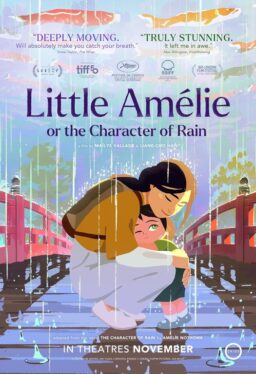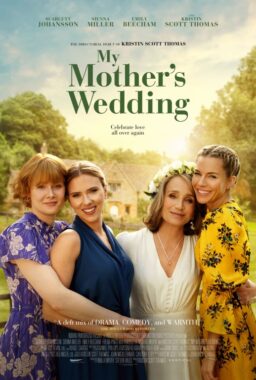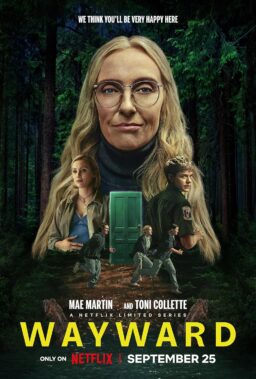
Three eloquent and distinctly personal appreciations of the opening of Paul Thomas Anderson’s “Punch-Drunk Love“:
From Nareg Torosian, ScreenPlay:
The opening shot of one of my favorite films of recent years, Paul Thomas Anderson’s “Punch-Drunk Love” (2002). As described on the DVD’s back cover, the focal point of the movie is Barry Egan, “a socially impaired owner of a small novelty business, who…is unlikely to find love unless it finds him.” On the surface, nothing much happens during the handheld shot that begins the movie, but for this first minute and a half, Anderson is able to set up three crucial elements for the rest of the film:


1. Barry’s loneliness. The set is about as sparse as can be – one desk and one chair in the corner of a large, unadorned, warehouse-like room. No one else will enter the frame, and other than the voice on the other end of the telephone, no other sound can be heard. (A metallic ping that breaks the silence will attract Barry’s attention and cause him to leave, thus creating a bridge to the film’s next shot. Jon Brion’s lush, atmospheric score/soundscape will not come to play for several minutes.) Anderson shoots the sequence in a long shot, and the resulting amount of empty, indifferent space conveys the character’s sense of isolation and emotional distance; this composition is mirrored later when Barry calls the phone sex service in his apartment and when he calls Lena from a pay phone in Hawaii. Even the first spoken line (“Yes, I’m still on hold”) subtly hints at his feeling of emotional repression and arrested development.

2. Barry’s phone etiquette. In the opening dialogue, Barry politely and rationally explains a loophole in one of Healthy Choice’s promotional campaigns to one of the company’s phone representatives. This is one of many phone conversations he will have during the course of the film, and it will become clear that he is a man who (initially) seems more confident and can express himself more clearly over the phone than in person.

3. The film’s color scheme. Color is very important in this movie, and the shade of blue on the warehouse wall and on the suit Barry wears will be closely identified with him throughout the film. It is not until Lena’s appearance that a vibrant red will make its way into Anderson’s palette, literally and figuratively signaling a change in Barry’s monotonous existence.

From Patrick Svensson:
… My mind keeps reeling back to the fantastic, hilarious, surreal, evocative, and jarring opening shot of PT Anderson’s relatively popular 2002 film, “Punch-Drunk Love.” The film cuts abruptly from a black screen to a shadowy shot of Barry Egan, impressively conveyed by Adam Sandler, sitting at his desk talking on the phone with a representative at Healthy Choice Foods about their promotion involving clipping POPs from their product in exchange for frequent flyer miles. Barry is dressed in blue, as he is throughout the whole film, and sits against a field of blue paint which covers the bottom half of the walls. His desk appears very small and is located in the corner of a seemingly empty, grey room; random, hollow noises of quiet warehouse air surround him. Immediately we sense Barry’s loneliness — the sonic vacantness and the swarthy lighting and color scheme communicate a modern sort of despondency which afflicts Barry.

The representative on the phone is not responding helpfully to Barry’s discovery of a loophole in their promotion that would potentially award him more frequent flyer miles than the promotion guidelines suggest — Barry’s mumbling way of communicating doesn’t help matters. He’s hopelessly lost with words; he apologizes for no reason and fills the air with awkward pauses. After ending the phone conversation (which is very funny, setting up the film’s unique sense of conversational humor), Barry picks up his thermos and walks across the room. The camera follows him into what seems like complete blackness (it reminds me of several shots in David Lynch’s “Lost Highway,” in which the camera follows a person into pure shadow). Then the abrupt, rackety sound of the large metal door opening upward fills the soundtrack, and we see the dirty blue haze of a Los Angeles dawn. Barry shuffles outside and the camera swoops around his head, making sure to capture the tranquil ambiance of the morning atmosphere, and looks in the direction Barry’s looking. The parking lot is out of focus, but after a few beats, the focus pulls back and we see everything that Barry sees.

This shot means everything to the movie (the second shot, with the car crash, means a whole lot too). It introduces the audience to its unorthodox presentation of its maladroit main character, startling noises, quirky humor, suggestive lighting, alternately static and sweeping camerawork, and complete spatial reorientation. It’s a beautiful mini-mood piece starting off one of my favorite films. There are many many more that I would love to submit, but this will have to suffice.
From Will Garroutte:
Whenever P.T. Anderson comes in conversation, it’s typically in the context of either “Magnolia” or “Boogie Nights.” “Punch-Drunk Love” is pretty much entirely passed over, which is a shame. It’s my favorite of his movies, and a very strong contender for my favorite movie of all time. As much as it disappoints me, though, it’s understandable. The movie’s rather uncomfortable to watch – character interactions that are constantly tinged with awkwardness and failure to communicate; a stark palette that results in a world of color bars (Look at how the food in the supermarket aisles are arranged, for instance); sudden transitions in mood and tone. All of these
factors are employed to get the viewer into Barry Egan’s mindset, and all of them are on display right in the opening shot.
There are no title cards and no opening credits. The very first image is Barry at a desk in the corner of a room, and nothing else. His suit matches the stripe of blue running around the room, in contrast to the larger white portion of the wall, and he nearly blends into it. He’s at an odd angle to the camera, and situated far away from it. All of this combines to make him seem utterly insignificant, right in the first second of film. And note his conversation with the Healthy Choice customer service man — asking questions in a hushed, conspiratorial tone, apologizing, doubting his own understanding of the situation, and unsure how to end the conversation. When he finally does, he stands up and walks towards the edge of the frame, passing rapidly into complete darkness. A garage door is opened, and it’s another sudden transition back to light.
The whole sequence is very disorienting, being entirely devoid of the trappings we expect at a movie start and being unrelentingly awkward. But it is an amazing microcosm of Barry’s mental landscape — he feels uncertain and unable to properly express himself; insignificant and yet different from the rest of the world; and filled with bipolar shifts. Excellent stuff.
P.S. Speaking of lesser-lauded Anderson flicks, I was glad to see the opening shot of “Sydney” [aka “Hard Eight“] in your Opening Shots quiz — it’s another of my favorites. I love when the semi passes the screen, and you can still see Sydney below it. It’s just a really cool composition.
JE: Fantastic. Thanks to all three of you for your perceptiveness, your enthusiasm … and your patience! Patrick: Terrific comment about the way the shot passes through darkness on the way from the barren, artificial fluorescent interior to the open, promising, natural (as natural as light gets in LA) exterior early-morning sunlight is magnificent. (That light is warm, pinkish, feminine — in stark contrast to the cold blue associated with Barry.) This is the vantage from which two fortuitous signs appear to him, like angels to rescue him from his solipsistic isolation — first the harmonium, then Lena. It is, of course, the journey Barry takes in the movie — and I couldn’t help but think of “Lost Highway,” too! The blackness of that passage reflects the darkness of Barry’s rage and alienation, which he has to pass through to get to the (sun)light he yearns for.
Also, I love the rack focus at the very end of the shot that goes from Barry to the parking lot entrance. Not only does it convey the feeling that Barry is out of synch with his surroundings, but it has the effect of focusing the viewer’s (and Barry’s) attention to that little opening through which something is about to enter Barry’s world.










